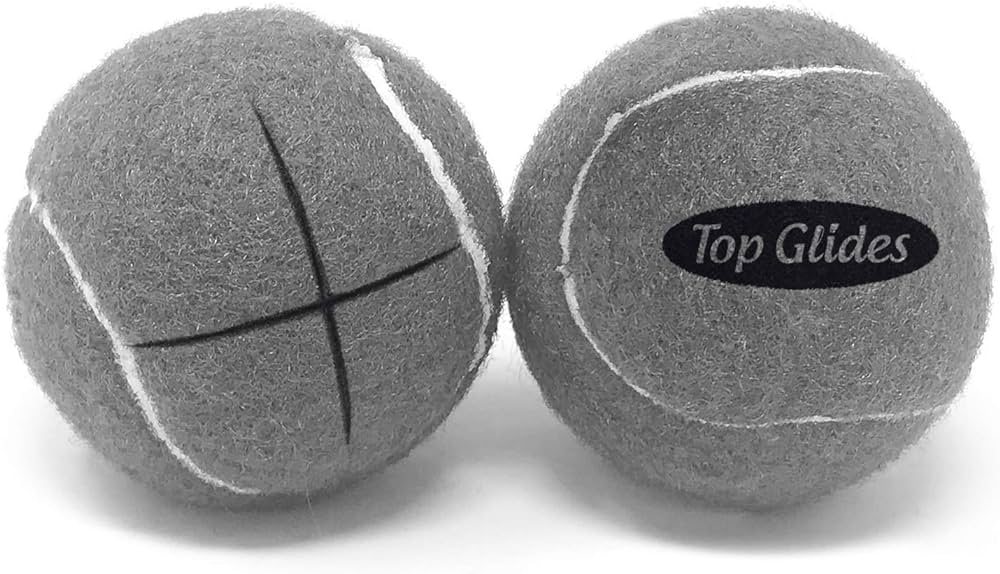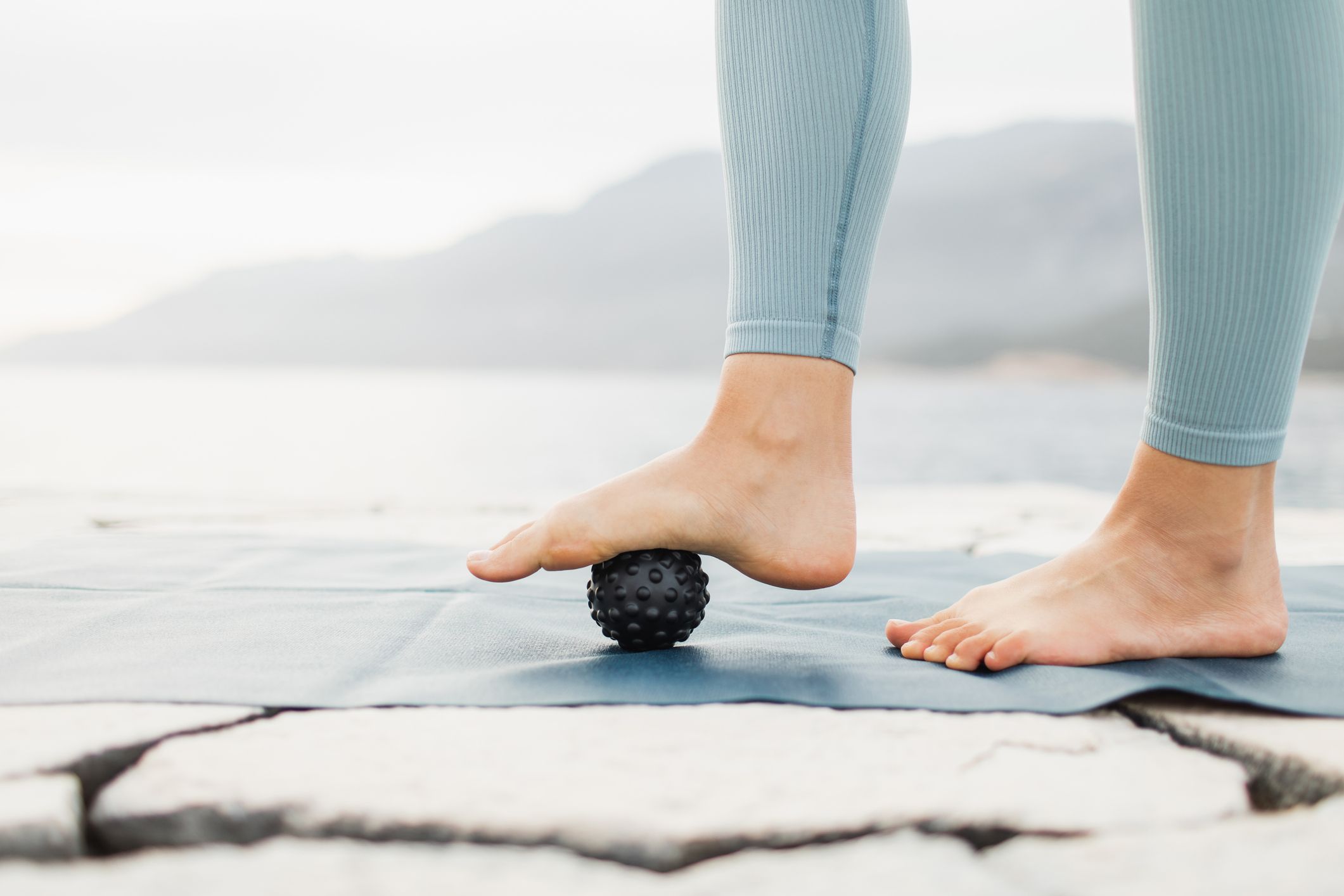People put tennis balls on walkers as a safer and cleaner alternative to help them see the walker’s legs and avoid stumbling or tripping. Instead of using tennis balls, Walker Coasters mobility aids glide over surfaces, providing better stability and allowing for smooth movement.
These coaster-like attachments are a more durable and efficient solution compared to using tennis balls, which tend to grab on rough surfaces like concrete. Walker Coasters are recommended for indoor use and offer a safer and more convenient option for individuals using walkers.
With their bright yellow color, they are easily visible and help enhance the overall mobility experience.
Table of Contents
ToggleThe Benefits Of Using Tennis Balls On Walkers
Many elderly individuals and people with mobility issues utilize walkers to assist them in getting around. However, those who have used walkers extensively may have discovered that the standard rubber tips on walker’s legs can cause issues such as instability, difficulty maneuvering, and damage to floors. To overcome these challenges, a simple and cost-effective solution has emerged: tennis balls. By placing tennis balls on the bottoms of walker’s legs, several benefits are realized, including enhanced stability, smoother maneuverability, and protection for floors while reducing noise. Let’s explore these benefits in greater detail.
Enhanced Stability
One of the primary benefits of using tennis balls on walkers is the enhanced stability they provide. The mechanics behind this improved stability are quite simple. When the walker is equipped with tennis balls, a larger surface area comes into contact with the ground, increasing friction and preventing slipping. This dramatically improves the user’s balance and reduces the risk of falls, providing them with greater confidence while using the walker.
Smooth Maneuverability
In addition to stability, tennis balls on walkers greatly improve maneuverability. By reducing friction between the walker and the floor, tennis balls allow for smoother movement. This makes it easier for users to navigate tight spaces, turn corners, and change directions with minimal effort. The result is increased independence and a more enjoyable experience while using the walker.
Protecting Floors And Reducing Noise
Another significant advantage of using tennis balls on walkers is their ability to protect floors and minimize noise. With regular rubber tips, walkers can leave scratches, scuff marks, and damage on hardwood floors. However, tennis balls act as a protective barrier, preventing any potential damage. Furthermore, the soft and cushioned nature of tennis balls absorbs impact and reduces noise, making them an ideal choice for indoor use where noise can be a concern.
In conclusion, the benefits of using tennis balls on walkers are numerous. They enhance stability by increasing friction, improving balance and reducing the risk of falls. Tennis balls also contribute to smoother maneuverability, making it easier for individuals to navigate their surroundings. Lastly, they protect floors from damage and reduce noise, ensuring a pleasant and safe user experience. With these advantages in mind, it’s no wonder why people choose to put tennis balls on their walkers.
Credit: www.runnersworld.com
The Surprising Reason Behind Using Tennis Balls On Walkers
It’s a common sight to see individuals using walkers with tennis balls attached to the bottom. At first glance, it may seem like an odd choice, but there are actually some compelling reasons behind this practice. From cost-effectiveness and accessibility to DIY options versus store-bought attachments, let’s explore the surprising reasons behind using tennis balls on walkers.
Cost-effectiveness And Accessibility
When it comes to walker accessories, tennis balls have gained popularity for being a convenient and affordable option. Let’s take a closer look at why tennis balls are a preferred choice:
- Affordability: Tennis balls are easily accessible and inexpensive. They can be purchased in bulk at sporting goods stores, making them a cost-effective solution for those on a budget.
- Durability: Despite their soft exterior, tennis balls are surprisingly durable. They can withstand regular use and provide a reliable grip on various surfaces.
- Increased Stability: By attaching tennis balls to the bottom of a walker, users can experience improved stability and smoother movement. The soft rubber surface grips the ground, reducing the risk of slips and falls.
In addition to being an affordable option, tennis balls are also easily accessible compared to specialized walker attachments. While other accessories may require specific measurements or compatibility, tennis balls can fit most walkers with minimal modification.
Diy Versus Store-bought Options
When it comes to modifying walkers with tennis balls, there are two main approaches: DIY modifications and store-bought attachments. Let’s explore the pros and cons of each:
DIY Tennis Ball Modifications:
- Pros:
- Cost-effective: DIY modifications using tennis balls are inexpensive and can be done with materials readily available at home.
- Customizability: Users have the flexibility to choose their preferred method of attaching tennis balls to their walkers, such as cutting a slit or using adhesive.
- Cons:
- Less durability: DIY modifications may not provide the same level of durability as store-bought attachments specifically designed for walkers.
- Varied results: Since DIY modifications rely on individual skills and techniques, the effectiveness of the tennis ball attachment may vary.
Store-Bought Walker Attachments:
- Pros:
- Purpose-built: Store-bought attachments are designed specifically for walkers, ensuring a secure and durable fit.
- Wide availability: They are readily available at medical supply stores and online retailers, making them easily accessible for users.
- Cons:
- Higher cost: Compared to DIY modifications, store-bought attachments can be more expensive.
- Limited customization: Users may have limited options for customization, as store-bought attachments come in specific designs and sizes.
The Evolution Of Using Tennis Balls On Walkers
Now that we’ve explored the practical reasons behind using tennis balls on walkers, it’s interesting to delve into the history and evolution of this simple yet effective hack:
The use of tennis balls as walker attachments started gaining popularity within the senior community. It provided a practical and cost-effective solution to enhance stability and mobility. Over time, this simple hack has become widely adopted, offering seniors a reliable and accessible accessory for their walkers.
Tips And Considerations For Using Tennis Balls On Walkers
Using tennis balls on walkers is a popular practice among older adults and individuals with mobility issues. These simple modifications can greatly enhance the stability of a walker, making it easier to maneuver and navigate various surfaces. However, there are important tips and considerations to keep in mind when using tennis balls on walkers. In this section, we will explore proper installation and maintenance, personalization and customization options, as well as alternatives to tennis balls for walkers.
Proper Installation And Maintenance
Step-by-step guide on how to install tennis balls on walkers
Installing tennis balls on walkers is a straightforward process that requires minimal tools and effort. Follow these steps for proper installation:
- Begin by deflating the tennis ball to make it easier to work with.
- Using a sharp knife or scissors, make a small slit or “X” on the top of the tennis ball.
- Slide the slit over the bottom legs of the walker, making sure it fits snugly.
- Repeat the process for the remaining legs of the walker.
- Once all tennis balls are securely attached, inflate them to the desired firmness.
It’s essential to regularly inspect and maintain the tennis balls on your walker to ensure their effectiveness and safety. Here are some best practices for maintenance:
- Regularly check the inflation level of the tennis balls. They should be firm but not overinflated.
- Inspect the balls for any signs of wear, including cracks, tears, or deterioration.
- Replace the tennis balls if they become damaged or lose their grip.
Personalization And Customization
Creative ways to personalize tennis ball modifications
While standard tennis balls are functional, why not add a personal touch to your walker? Here are some creative ways to personalize your tennis ball modifications:
- Choose tennis balls in your favorite color or pattern to add a pop of personality to your walker.
- Decorate the tennis balls with stickers or decals that reflect your interests or hobbies.
- Experiment with different types of balls, such as foam or rubber, to find the right combination of stability and cushioning for your needs.
Remember that personalization not only adds style but can also make your walker more easily identifiable in crowded spaces or group settings.
Alternatives To Tennis Balls For Walkers
Exploring other options for enhancing walker stability
While tennis balls are a popular choice, there are alternatives available for enhancing walker stability. Here are a few options to consider:
| Alternative | Description | Pros | Cons |
|---|---|---|---|
| Walker glides | Plastic or rubber attachments that easily slide on the walker’s legs. | – Smooth movement – Durable – Easy to clean |
– May not provide as much cushioning as tennis balls – Not ideal for outdoor use |
| Glide skis | Attachable skis that glide over various surfaces. | – Excellent maneuverability – Suitable for both indoor and outdoor use – Provides stability on uneven terrain |
– More expensive than tennis balls – Requires proper installation |
When considering alternatives, it’s important to assess the pros and cons to determine which option best suits your specific needs and preferences.
Frequently Asked Questions Of Why Do People Put Tennis Balls On Walkers?
Why Do People Put Tennis Balls On The Back Of Their Walkers?
People put tennis balls on the back of their walkers as a safer and cleaner alternative to help see the walker’s legs and avoid stumbling or tripping. Walker Coasters, a mobility aid, glide over surfaces compared to the soft covers of tennis balls that tend to grab on rough surfaces.
What Can I Use Instead Of Tennis Ball On Walker?
Instead of tennis balls, you can use Walker Coasters as a safer and cleaner alternative. They glide over surfaces and help prevent stumbling or tripping. Walker Coasters are available on Amazon in a tennis ball yellow color.
How Do You Use A Tennis Ball On A Walker?
Tennis balls are placed on walkers to provide better stability and prevent slipping. To use them, simply cut a small hole in the ball, then insert the legs of the walker into the holes. This helps the walker glide smoothly and quietly, making it easier to move around.
What Are Walker Balls For?
Walker balls are used as a safer and more durable alternative to tennis balls on walkers. They allow the walker to glide smoothly and quietly over surfaces, making movement easier. Unlike tennis balls, walker balls are recommended for indoor use and are less likely to grab on rough surfaces like concrete.
Conclusion
Using tennis balls on walkers is a common practice for many people, but it’s not always the best solution. Instead of tennis balls, consider using Walker Coasters as a safer and cleaner alternative. These mobility aids glide smoothly over surfaces and prevent stumbling or tripping.
Unlike tennis balls, Walker Coasters are more durable and won’t grab on rough surfaces. So, if you’re looking for a better option, give Walker Coasters a try. Improve your walker’s stability while staying safe and comfortable.







